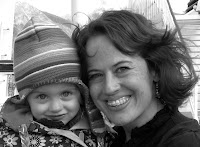As parents we wish we could shield our children from all kinds of pain: injury, sadness, loneliness, and failure. One of my sons had a particularly hard time learning to read.
He had been to a private school for Kindergarten but we had felt the Lord lead us to home school him and his brother for a couple of years. During the first several months of first grade he loved school, except when it came time to read. He'd become restless and distracted. I tried moving reading time to the couch hoping to help him feel more comfortable but he’d end up laying on his side, half on the couch, half off, upside down, and standing up. He’d work really hard to sound out a new word and after much effort he’d get it only to forget it when it would show up in the next sentence and have to go through all the work again.
I hated seeing him so uncomfortable and discouraged. One day I asked the Lord what to do. Feeling inadequate as a mom who wasn’t a trained teacher to give him the help he needed, I felt the Lord lead me a passage in James.
James 1:2-4 which says; 2Consider it pure joy, my brothers and sisters,whenever you face trials of many kinds, 3 because you know that the testing of your faith produces perseverance. 4 Let perseverance finish its work so that you may be mature and complete, not lacking anything.
I then felt the Lord tell me when it was time read each day to place my hand on his head and thank Him (the Lord) for the great mind He had given my son and then just do the lesson with an optimistic light-hearted approach, trusting that God was using this struggle to produce perseverance in my sons character. It wasn’t until 4th grade that he saw a full break through with his reading and then soared, scoring the highest in his class in speed and comprehension.
Romans 8:28 assures us the following... 28 And we know that in all things God works for the good of those who love him, who have been called according to his purpose.
Praise God, even our failures can become strength for tomorrow.
Enjoy your "moments",
Lanise Santala
Labels: Moments








































